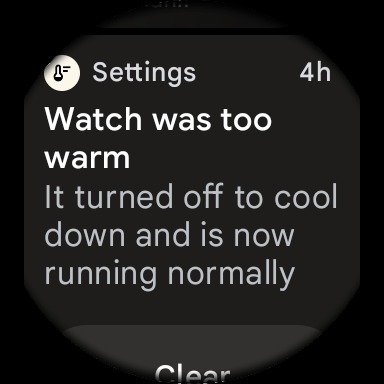When a large number of people purchase a new phone simultaneously, it is common to see complaints about overheating on social media the first day of use.
This can be disheartening after spending a significant amount of money on a phone that was highly recommended, only to be faced with overheating issues. The negative commentary and blame game on social media only add to the frustration.
The good news is that there is nothing wrong with your phone, and overheating on the first day (and maybe the second day) is to be expected, even if you are using it indoors with air conditioning. This heat warning indicates that your phone is functioning as intended by the manufacturer.
Why it happens

During the initial setup of your new phone, especially if you are restoring a large amount of data from a previous device, your phone is working at its maximum capacity. The network is running at full speed, files are being copied continuously, and system data is being written in large batches. Interfering with the setup process by changing wallpapers, widgets, icons, or engaging in activities like gaming or browsing while the phone is busy can overwhelm the processor.
Phones have a limit to the amount of heat they can dissipate from the internal chips. As you use the phone, heat is generated. If more heat is produced than can be dissipated, a warning is issued, or the device may shut down to prevent damage to the chip. Once the phone cools down, everything returns to normal.
Due to the large amount of data being written and indexed during the initial setup, any additional activity can cause the phone to overheat.
It’s worse than it used to be
Instances of phone thermal issues are most commonly seen when a new iPhone is released, especially with the last two models. This can be attributed to the evolving design of smartphones and the challenges faced in heat dissipation, particularly with thinner phones and faster chips.
The trend towards ultra-thin phones with glass fronts and fast chips has made heat dissipation more challenging. The use of materials like titanium, as seen in recent iPhones, exacerbates the issue as titanium is a poor conductor of heat, trapping more heat inside the device.
Apple released a software patch to regulate processor temperatures for the iPhone 15 and may do the same for future models. Manufacturers may need to fine-tune cooling systems to address overheating during demanding tasks like device setup.

This does not imply that titanium is inferior; it simply necessitates a different approach to cooling due to its unique properties. Thinner and smaller devices, like modern smartphones, are more susceptible to overheating compared to older, thicker devices made from materials like plastic, which dissipated heat more effectively.
What can I do?

The solution is simple yet challenging: allow the phone to cool down for a while.
Complete the setup process on your new phone and refrain from using it until the setup is complete. After everything is set up, reboot the phone. Avoid the urge to tinker with the device until it has finished the most demanding task it will ever face, and the overheating issue should resolve itself.
While you may come across unconventional suggestions like placing the phone in the refrigerator or on top of an air conditioner vent, it is best to ignore them. Disregard any claims that your phone is defective or that you should have chosen a different model. If thermal issues persist, the device may have a fault, or the manufacturer may need to release a software update. However, experiencing overheating on the first day is unfortunately common unless you are using a phone with a built-in fan.
This article was first published at Source link . You can check them out for other stuffs
